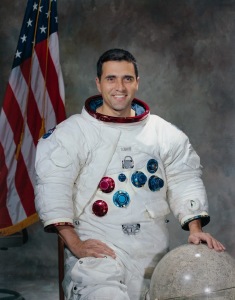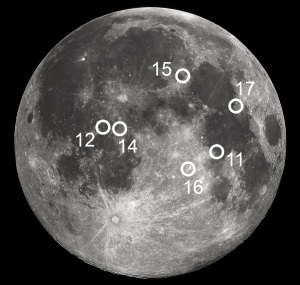 Harrison Schmitt got a PhD in Geology from Harvard 1964 where he did fieldwork on the west coast of Norway, New Mexico, Montana, and Alaska. In 1965 he began working at the US Geological Survey’s Astrogeology Center where he was the project chief for lunar field geological methods and participated in photo and telescopic mapping of the Moon. Schmitt was instrumental in helping decide the location of the lunar landings and guiding the astronauts of Apollo 11, 12, 14, 15, and 16 on collecting samples to return to Earth. However, for the Apollo 17 mission Harrison Schmitt would be given the opportunity to be the first and only civilian to set foot on the Moon. He was also the last of the Apollo astronauts to set foot on the Moon.
Harrison Schmitt got a PhD in Geology from Harvard 1964 where he did fieldwork on the west coast of Norway, New Mexico, Montana, and Alaska. In 1965 he began working at the US Geological Survey’s Astrogeology Center where he was the project chief for lunar field geological methods and participated in photo and telescopic mapping of the Moon. Schmitt was instrumental in helping decide the location of the lunar landings and guiding the astronauts of Apollo 11, 12, 14, 15, and 16 on collecting samples to return to Earth. However, for the Apollo 17 mission Harrison Schmitt would be given the opportunity to be the first and only civilian to set foot on the Moon. He was also the last of the Apollo astronauts to set foot on the Moon.During his journey into space, Schmitt occupied the lunar module pilot seat for Apollo 17 which lasted from December 6 to 19, 1972. Schmitt and Eugene Cernan landed the lunar module in the southeast edge of Mare Serenitatis, the furthest east of the landing sites. This last Apollo mission to the moon for the United States broke several records set by previous flights and include: longest manned lunar landing flight (301 hours, 51 minutes); longest lunar surface extravehicular activities (22 hours, 4 minutes); largest lunar sample return (an estimated 115 Kg, 249 lbs); and longest time in lunar orbit (147 hours, 48 minutes).
In all the Apollo missions retrieved over 380 kilograms of lunar rocks. These rocks have been used to understand the formation and evolution of the moon. In addition to finding many rocks similar to those found on Earth (albeit anorthosite is not found in great quantities on Earth), three new minerals were discovered from the moon: Armalcolite, Tranquillityite and Pyroxferroite. Although all three of these minerals have since also been found on Earth, it was just last year when a terrestrial counterpart to Transquillityite was discovered in Australia.
![]() This work is licensed under a Creative Commons Attribution-NonCommercial-ShareAlike 4.0 International License.
This work is licensed under a Creative Commons Attribution-NonCommercial-ShareAlike 4.0 International License.

